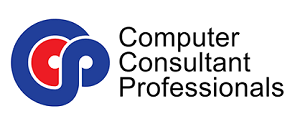An engaged employee not only has the potential to improve employee retention, productivity, and loyalty, but it is also a critical link to customer satisfaction, company reputation, and overall stakeholder value. But because the work environment is changing, the traditional model for getting employees involved may not get the results that are wanted.
When HR tech and tools are used to make significant changes, they often require a lot of tedious steps that can slow down workflows instead of speeding them up. In their personal lives, people of today enjoy the comfort that is geared towards the consumer.
Clicks and swipes give them an uber-tech experience.
When they go to work, they expect the same to happen. It’s high time for companies to live up to these employee expectations and use new technologies to give users a smooth and easy experience.
Here are some tech areas to look at if you want to keep your employees interested:
Digital onboarding: The employee experience starts before the person even starts working for the company. Through strong recruitment and onboarding, a well-designed ATS (Applicant Tracking System) helps employees feel like they belong and are loyal to the company from the start.
E-induction or digital onboarding can help new employees learn what they need to know to do their jobs well.
New and current employees are often the best at spreading the word about what it’s like to work there, and a high level of engagement among new hires can do a lot to build a strong employer brand.
Productivity of employees: Employees today have many roles and responsibilities, and HRMS software can help them get more done in less time. HR needs to move away from old systems and build strong technological tools to make people’s processes more efficient. HR management systems based on data and analytics help managers coordinate tasks, manage their teams, and keep track of their progress.
Internal communications: Employees are more likely to be productive if they can talk to each other quickly and clearly. This may not be a part of HR tech in its entirety, but open communication channels, both online and off, are a big part of keeping employees interested. HR can come up with ideas like podcasts or video conferences where leaders talk, internal social media sites, and online social intranet platforms for contests and internal communication.
Learning and development: Organisations are moving quickly away from the traditional desktop-based LMS (Learning Management System) and towards more flexible ways of learning. As learning becomes more of the responsibility of the employee, it’s essential to design and deploy learning media and content that can be used on multiple devices and in different formats. To make learning pull, HRMS tools like mobile learning, gamification, microlearning, etc., should be looked into.
Performance management and career paths: As we move away from the annual performance review process and towards real-time performance evaluation, the traditional PMS systems need to change to meet new needs. Modern PMS platforms must allow for real-time assessment through regular check-ins, 360-degree feedback, coaching, and mentoring. It should also have ways to connect career paths so that employees can take charge of their own career growth by getting the right performance insights and chances. Choosing suitable PMS systems can help keep performance communication open and honest, which makes employees feel more accountable and involved.
Total rewards: Because of the diversity quotient, there is no one benefits stack that fits everyone when it comes to incentivising employees. Instead, they want to have options and be able to request a change in rewards and appraisals. So rewards’ platforms must give employees a say in what they get. For example, it would be great to have a platform that gives employees a basket of benefits from which they can pick and choose what works for them based on their life stage, career stage, and personal and lifestyle preferences. This openness should also be shown in how people are recognised. Many companies are putting in place virtual platforms for recognition where employees can give each other praise in real-time.
Well-being and wellness: The pandemic brought to light the need for employees to be healthy in all areas, including their bodies, minds, relationships, finances, and spirits. HR needs to understand that employees today bring their whole selves to work and take steps to keep them healthy. Several apps and tools for employees can help them do this and also make them feel like the company cares about them.
Data and analytics: Many of the above HR tasks can only be done if HR technology is integrated with advanced data analytics. AI, machine learning, automation, and predictive analytics are not just buzzwords anymore. They can help HR and business managers make better decisions that will help the business grow. Whether it’s through reporting dashboards or AI-driven learning tools, there are many ways to make progress through technology. Creating and putting in place the right HR technology is only the beginning.
Conclusion
The real challenge is keeping this change going and making it work for businesses. In order to do this, HR professionals need to start learning HR tech skills and understand how technology affects business. First, HR leaders need to invest in learning more about new HRMS software technologies. Only then will they be able to build a solid business case and get leadership buy-in for the HR technology transformation they want.

